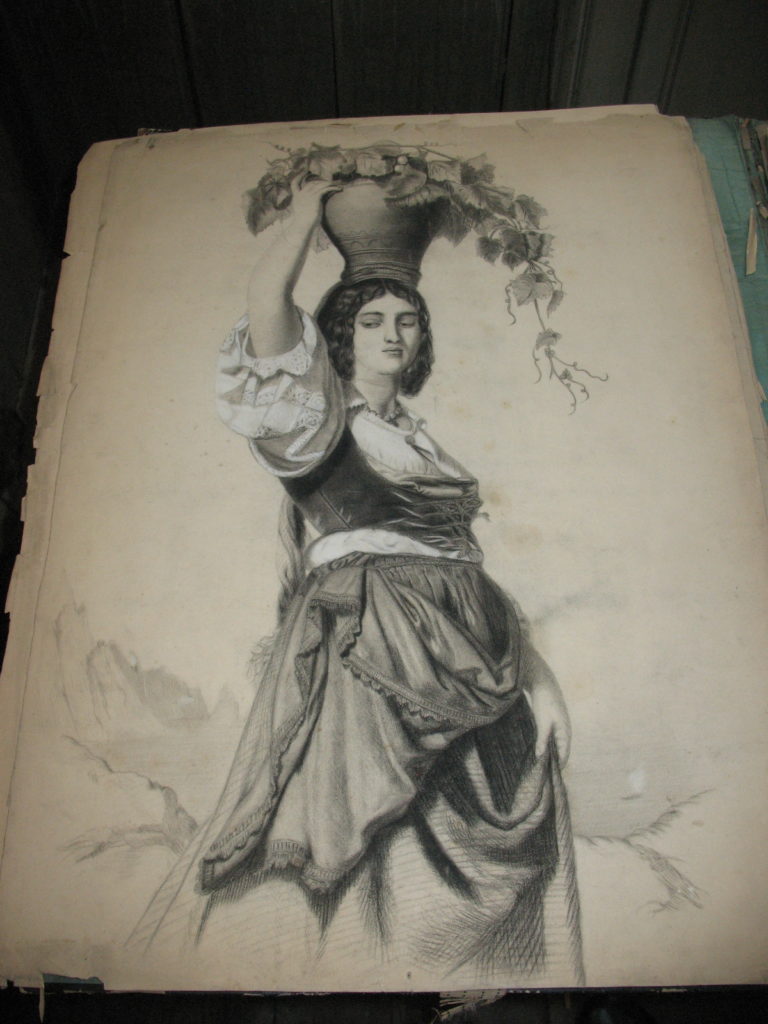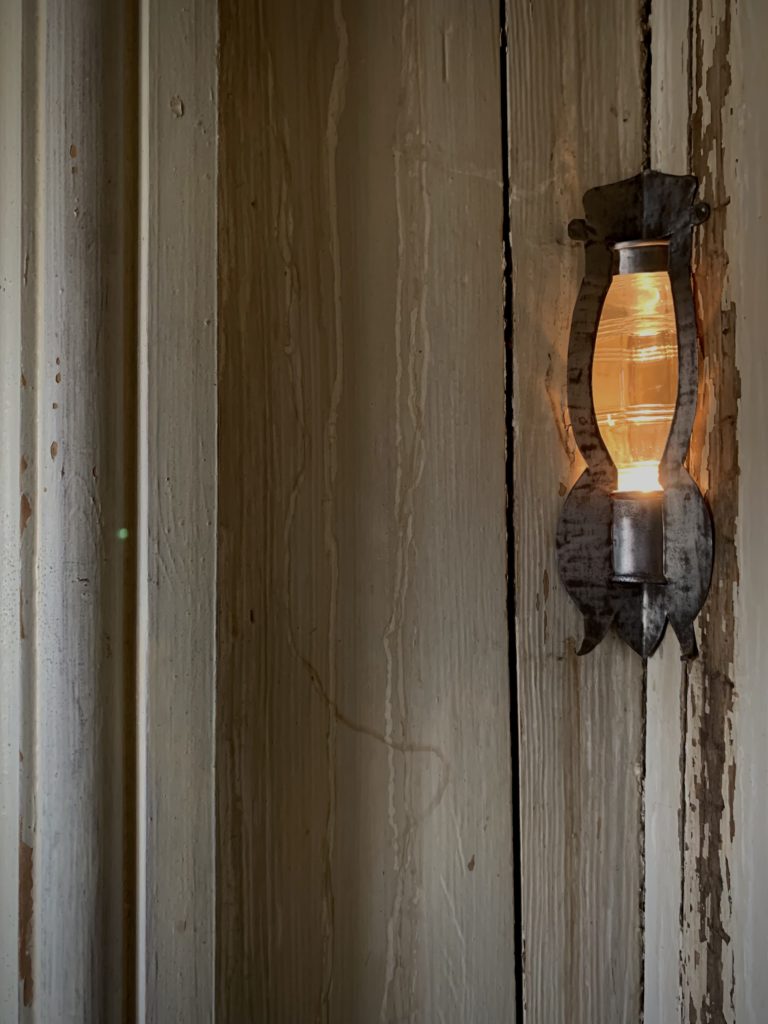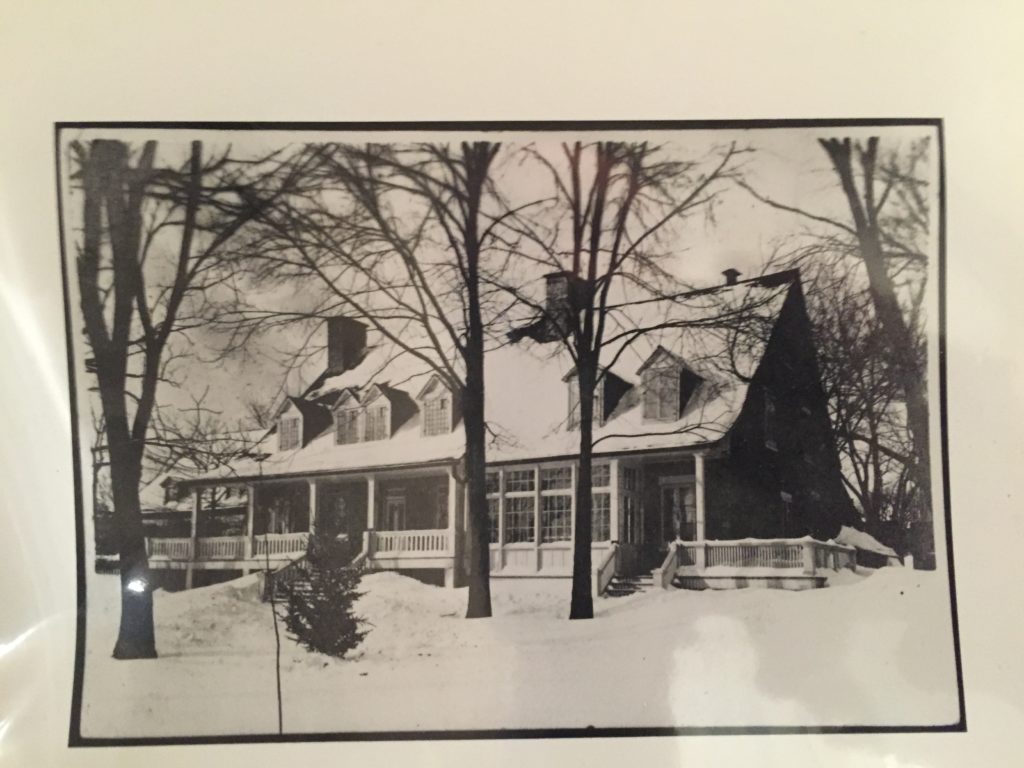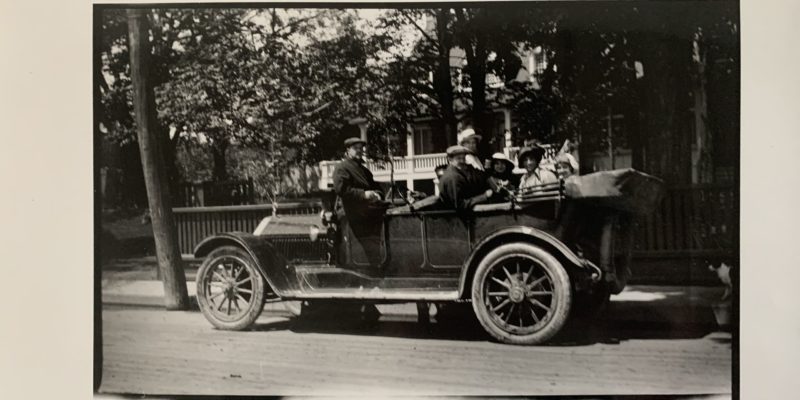Written by Delia Oltean –
The very first motorized carriages replacing horses, gramophones used to broadcast music, cameras… All these inventions dating from the end of the 19th to the beginning of the 20th century were discovered progressively by the last generation of Hurtubise. At the beginning of this century, rich in all kinds of changes, the increase in the family’s level of education contributed to quench the thirst for knowledge of the last ones who lived in the house. The access to art stimulated the different passions of the family until they left behind them, still today, traces of this interest.
Two names stand out when we go back to the beginning of the last century: Melvina and Léopold Hurtubise. Melvina’s profession as a nurse did not prevent her from improving her talent for drawing. Some of her drawings are still preserved in the house and can be viewed during a guided tour. Leopold, on the other hand, was more interested in technology and artistic fashions than in the application of any particular art.

When Leopold acquired the house in 1911, he took the opportunity to add “symbols of modern comfort to the interior, namely running water and electricity.” (Stewart and Robichaud, 2001, p.52) The Hurtubise house had thus been renovated to allow for the additional comfort that the technologies of their time allowed. Far from simply modernizing the interior, Léopold also modified the exterior look by undertaking renovations. He wished to “break the plain appearance adopted during the 1870s.” (Stewart and Robichaud, 2001, p.52) To achieve this result, the fieldstone rendering was removed, the siding on the addition differed from that of the house, and some windows were added.

Following the renovations of the Hurtubise House in 1911, the major change remains, despite all the modifications, the Beaux-Arts style gallery at the front of the house. Very trendy in the United States, Beaux-Arts architecture was popular between 1880 and 1930 and is recognizable by its massive appearance with many decorative arches and columns (Jackson, 2021, para. 7). This type of architecture was much more commonly used for large public buildings (for example the Grand Central Terminal in New York City), although it is possible to see privately owned homes of the elite in Newport, Rhode Island (Jackson, 2021, para. 3). The gallery of the Hurtubise House was first expanded to cover the entire length of the façade. The gallery turns the corner of the house to allow the addition of a staircase along the wall. It is likely that Leopold’s inspiration for the Beaux-Arts came from his travels (it should also be noted that Melvina lived in New York for some time). The gallery is then in the image of the trendy architecture of the time!

Sources:
- Stewart, A. Robichaud, L. (2001). Étude patrimoniale de la maison des Hurtubise. Institut d’histoire de l’Amérique française et Ministère de la Culture et des Communications.
- Jackson, A. (2021). Beaux-Arts Architecture: Definition, Characteristics & Style. Study.com. https://study.com/academy/lesson/beaux-arts-architecture-definition-characteristics-style.html
